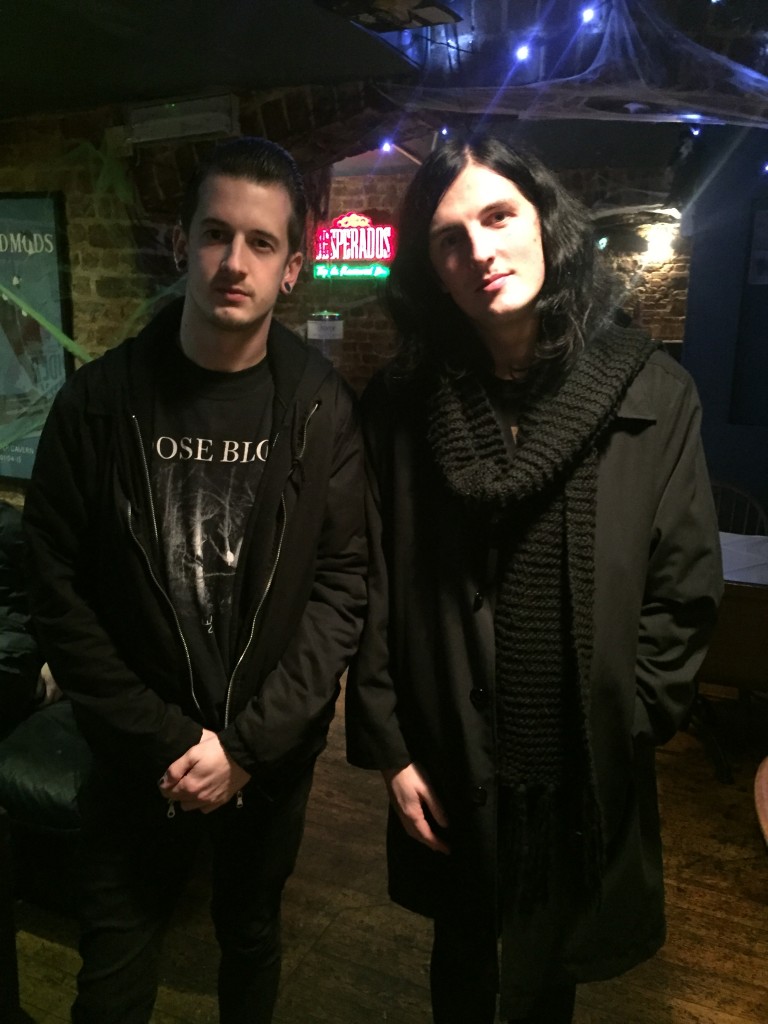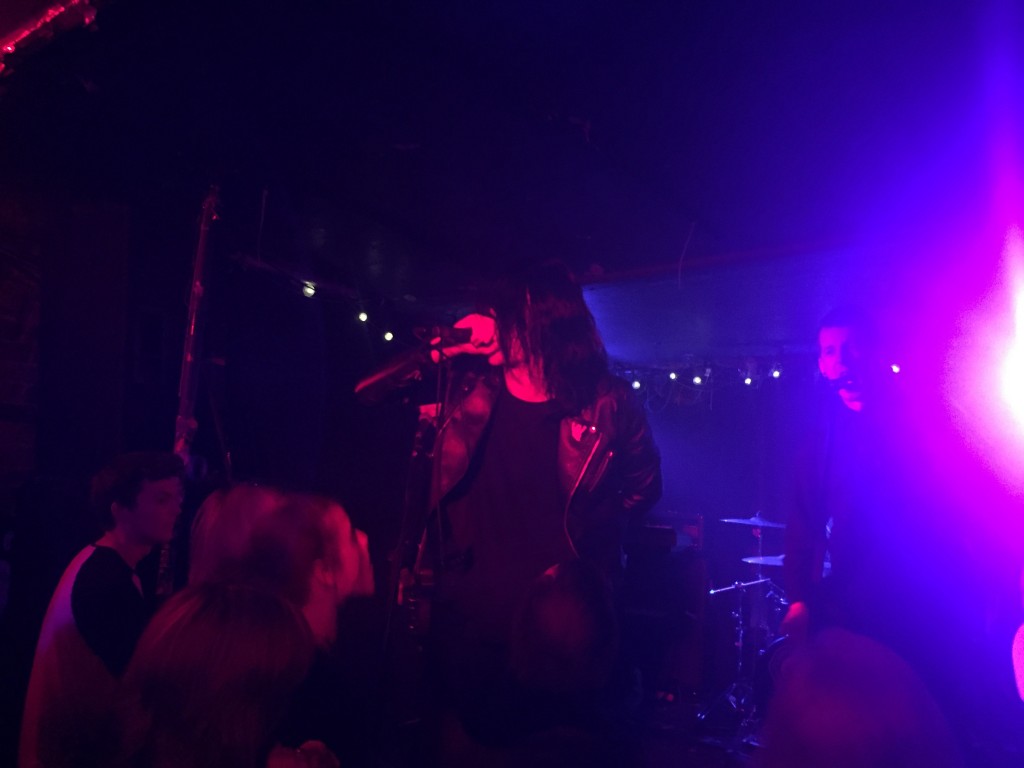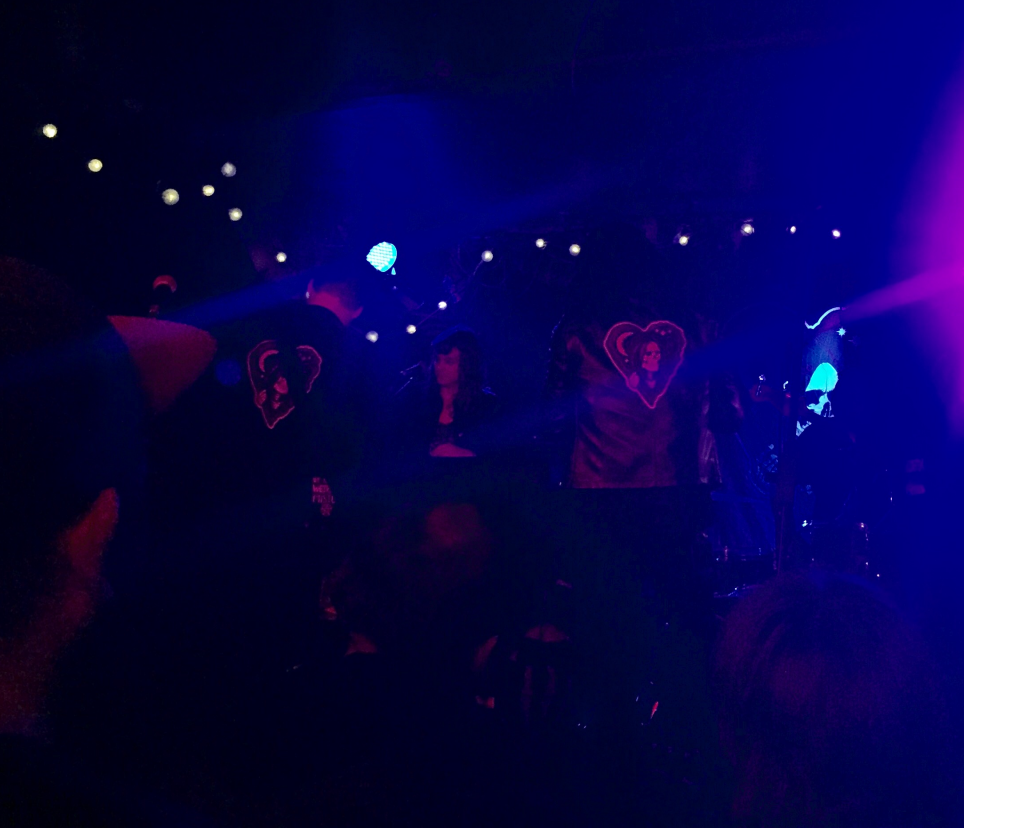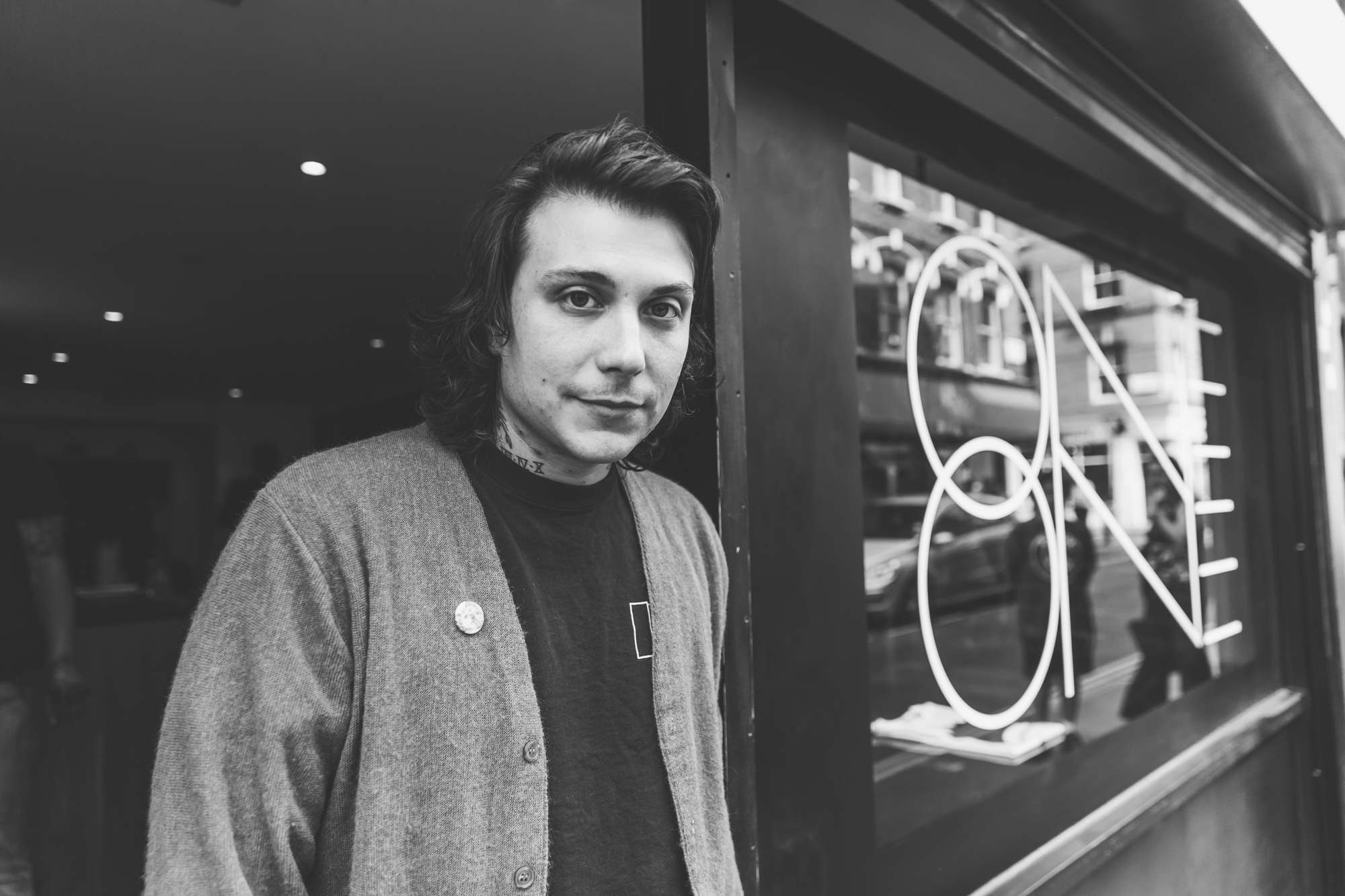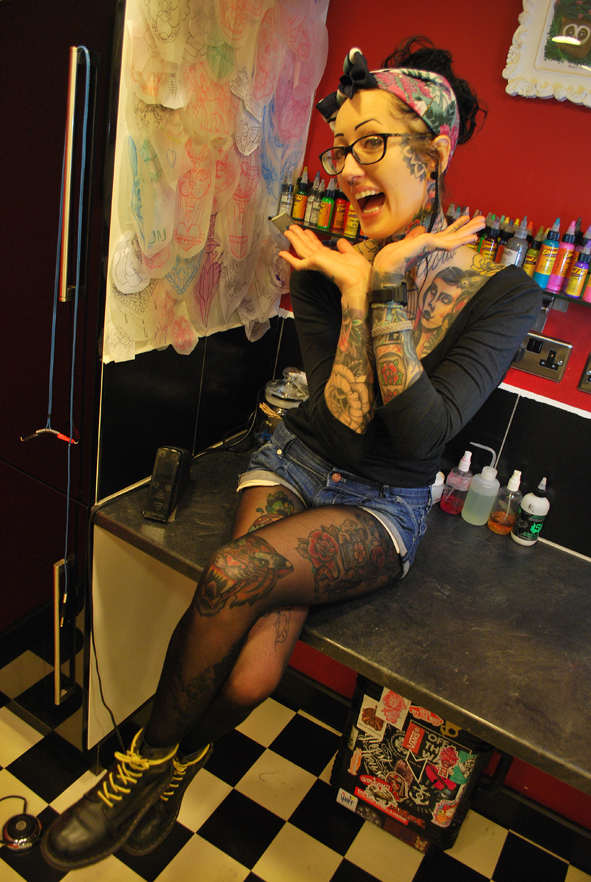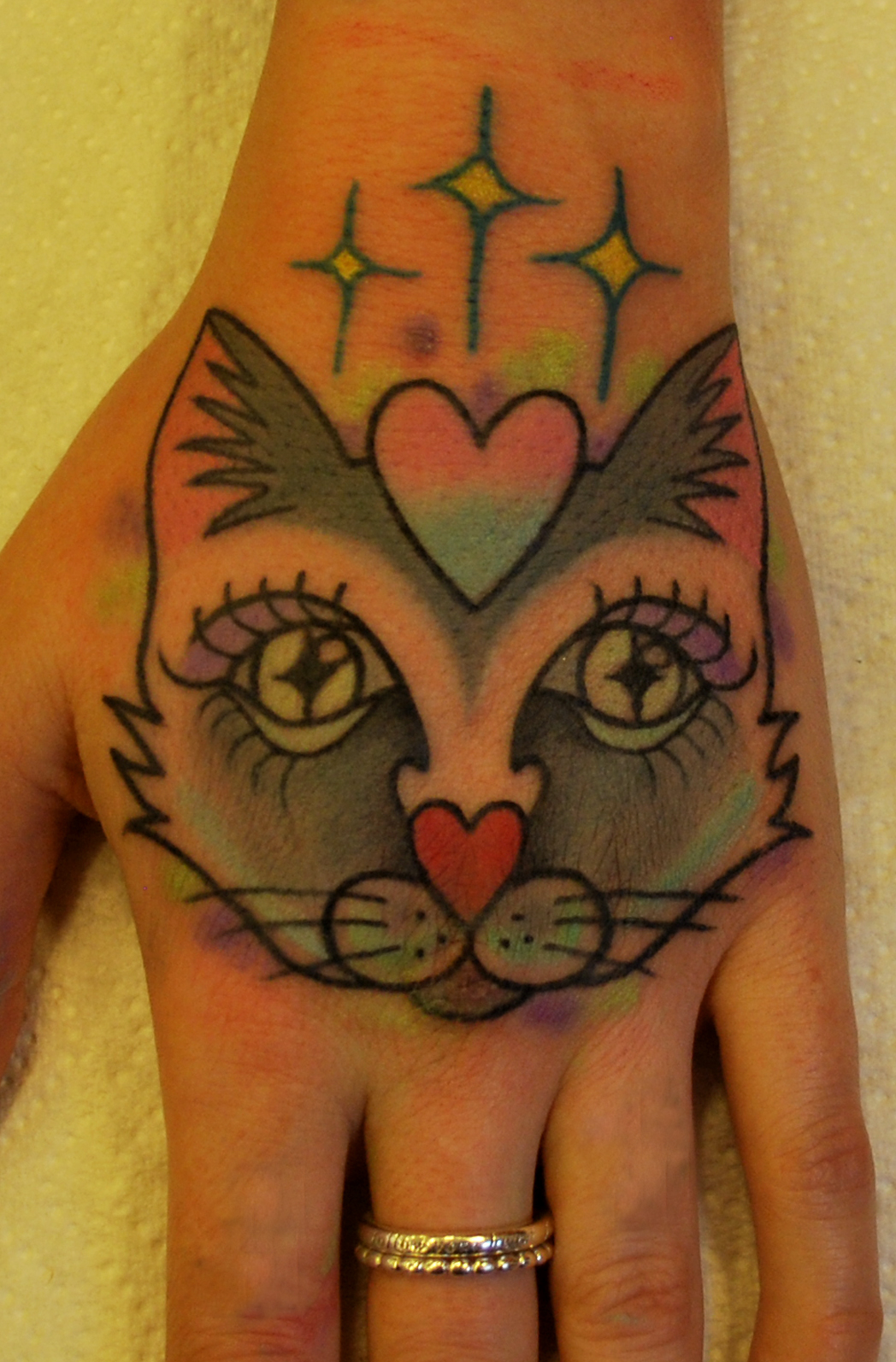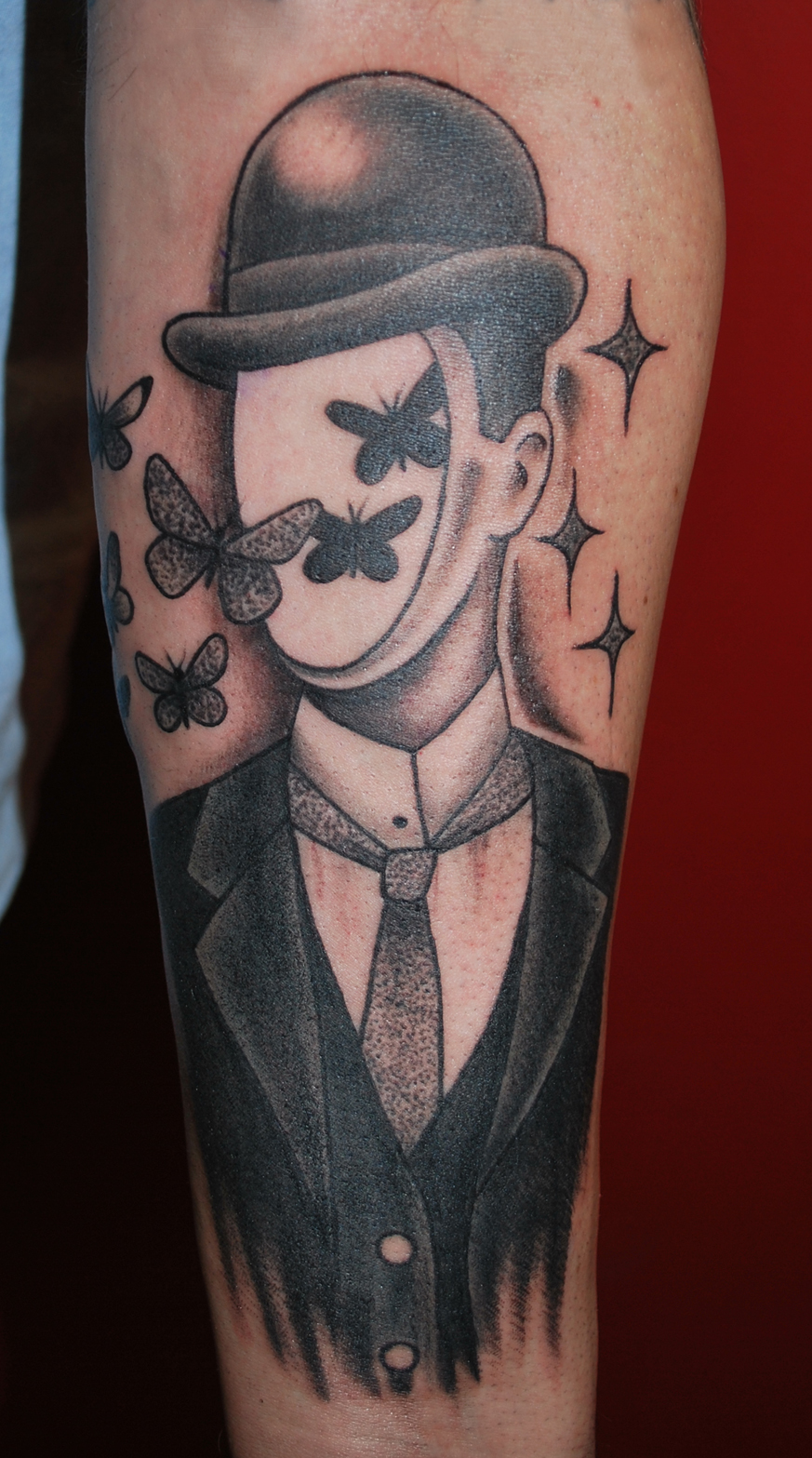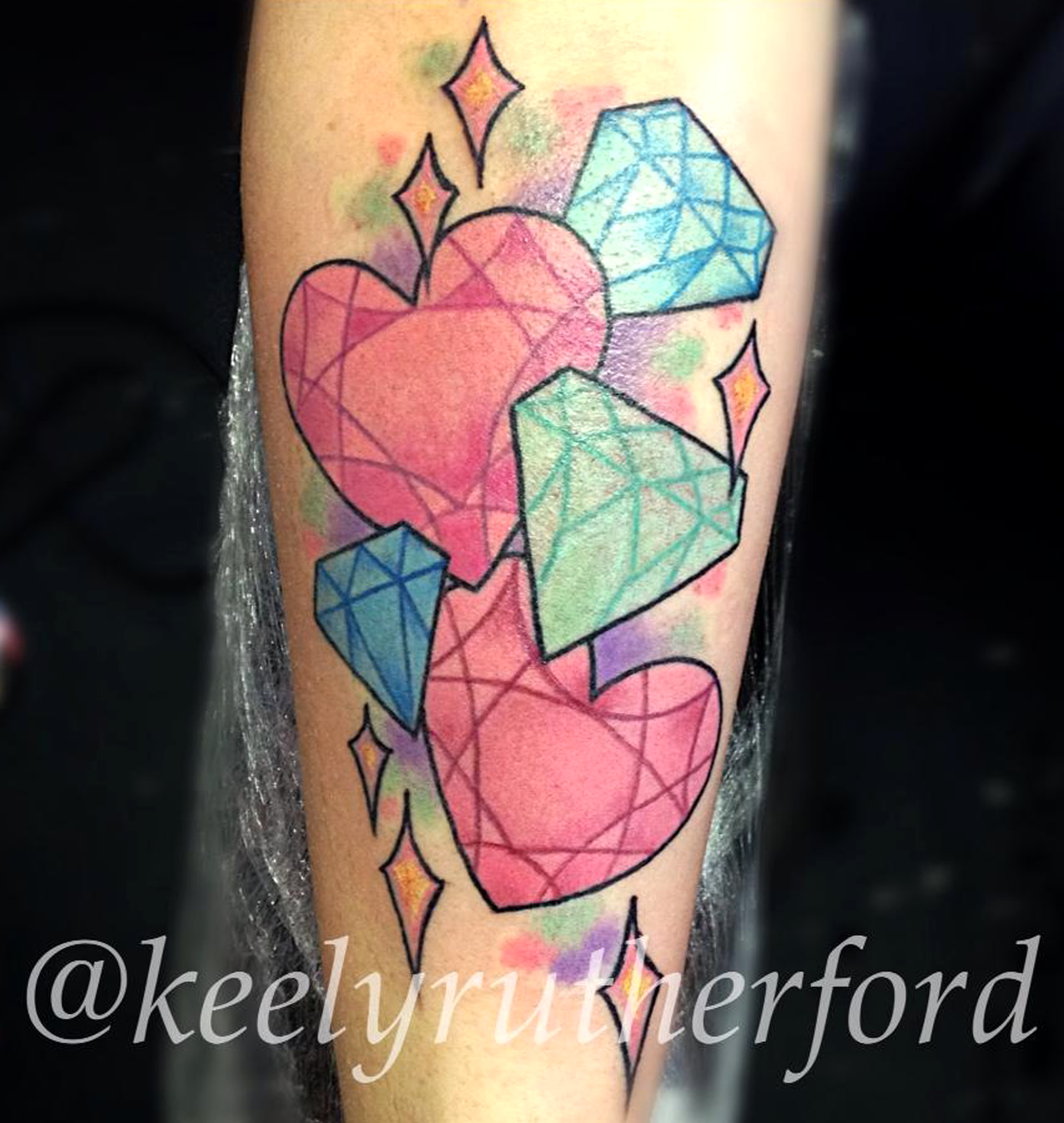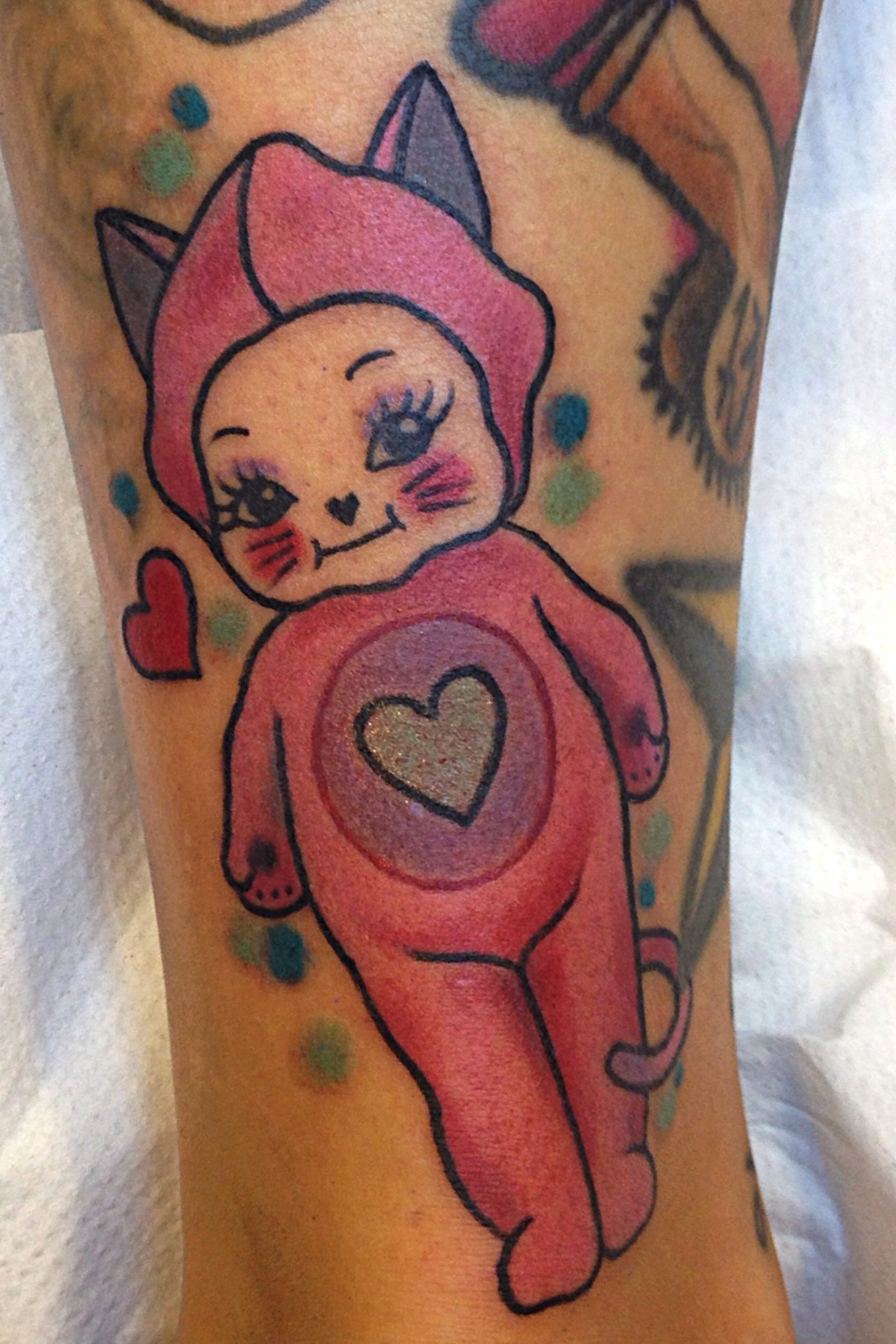‘Shaded’ is an on-going interview series created by 23-year-old Bournemouth-hailing music journalism student, writer and editor James Musker, which focuses on tattooists, the interesting people that wear their work and both the artist and canvas’s relationship to the craft.
Stephen William is an artist from the Clwydian Range in North Wales who’s currently living between London and Berlin – creating emotive, primal immediacy that speaks directly from the unconscious and transfers beautifully to skin. Here, Stephen speaks about his wide-view experience of the art world, the near-collapsing nature of his work and how a life-destroying flood pushed him to indulge the temporal medium of tattooing…
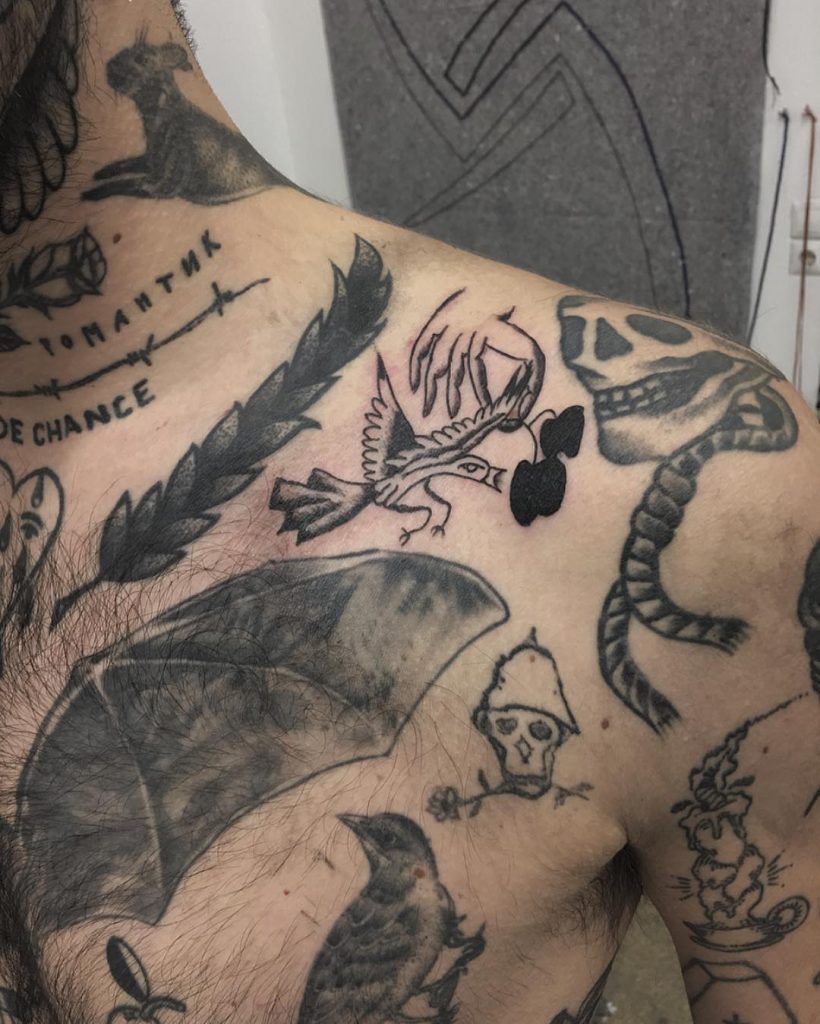
Can you speak to your relationship with art and creativity? I’ve been making zines and running small press for nearly 15 years. Mainly North Wales punk zines that no one read or reads, because there was and is no punk scene, but it’s where I began playing around creatively. Later, I was a printmaker for about five years – specifically etching and a little bit of lithography. At the time, I was completely dedicated and driven by the desire to be the best printmaker I could be, and along with that came a lot of patient, precision and figurative drawing. I started getting tattooed in shops around this time, before then I just had things done by hand or using homemade machines attached to car batteries behind garages – the sort of stuff you’d do as a young kid who grew up in the valleys. Both methods had their own merits. I could afford to get maybe one tattoo a year from an actual shop, and would spend most of that year deciding what I wanted to get.
I moved to London to do print at the RCA, but abandoned that after a few weeks. I don’t know why, but the idea of doing things in this technical and proper way completely left me all at once – as well as my patience. I think by trying to be as technical and “good” as possible, I would dismiss 90% of my output by focusing on the end – treating everything as a precious, archived product rather than focusing on the process.
A close friend of mine bought me a cheap machine around eight years ago. I experimented with it, and blunted a lot of needles trying to make marks and textures with wood-block prints. I didn’t want to tattoo anyone with it initially, I just wanted to see what it would do on wood and zinc plates. I was making my living as an artist for about eight years before I started my apprenticeship. I did this at the same time as I did my masters in painting and video; two years of making paintings, and videos about making paintings – scrubbing grips, cleaning, drawing. The same as everyone else. I would buy cheap machines from eBay and take them apart and put them back together again. I’d take apart my power supply and build weird frames and stick motors in them, but I left my apprenticeship and set up a private quiet studio. This felt closer to what I was trying to do.
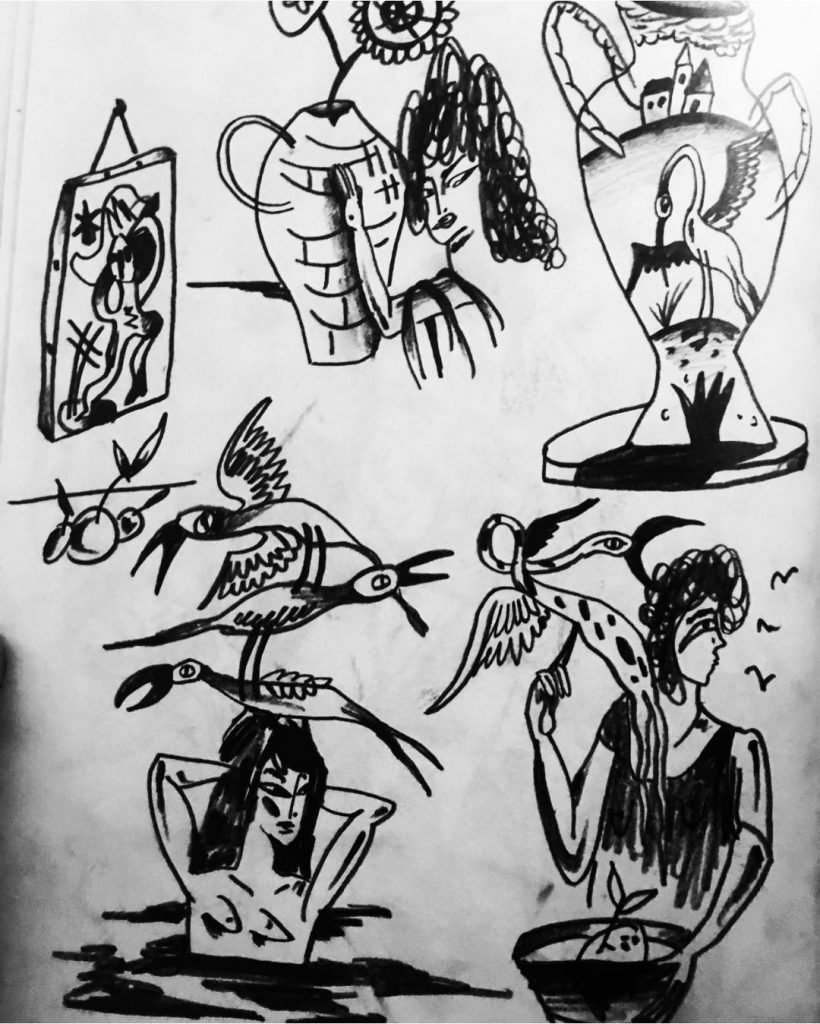
Your tattoos are incredibly free and adventurous. Were you always able to work in such a hyper-personal way, or did you first need to cut your teeth with traditional study? I apprenticed for nearly two years, but didn’t learn very much in-terms of actually making tattoos. I left before I really started. I always felt comfortable being very loose. I’m lucky I had a lot of time to develop that without tattooing in mind, so much. It lead me to this real loose place where I felt mostly comfortable. That’s what I like, and I figured if I liked it a few other people somewhere were bound to at some point.
I love tattooing, and I believe in it unwaveringly, but I don’t feel restricted or like I have to do anything a certain way. There’s a difference between respecting a tradition, and submitting to it. If people want to build high walls, I don’t care. I’m happy sniffing around at the bottom, and I’m comfortable with my height as it is. The people who claim to be saving the industry and keeping it true are the biggest threat to tattooing’s potency. No one owns tattooing. It’s a beautiful visual culture, there’s not much left that’s genuinely doing this or bringing together fringe scenes and building culture, and this is where the power lies and always has. As soon as you call something like tattooing an industry, you take all the power out of what you’re doing and cheapen it – removing any affect that it can have. It existed largely outside of art criticism, which is a blessing and a curse, but it’s allowed itself as a medium to stay very real when it’s done right. I’m very, very lucky that people are into what I do enough to want to get tattooed by me.
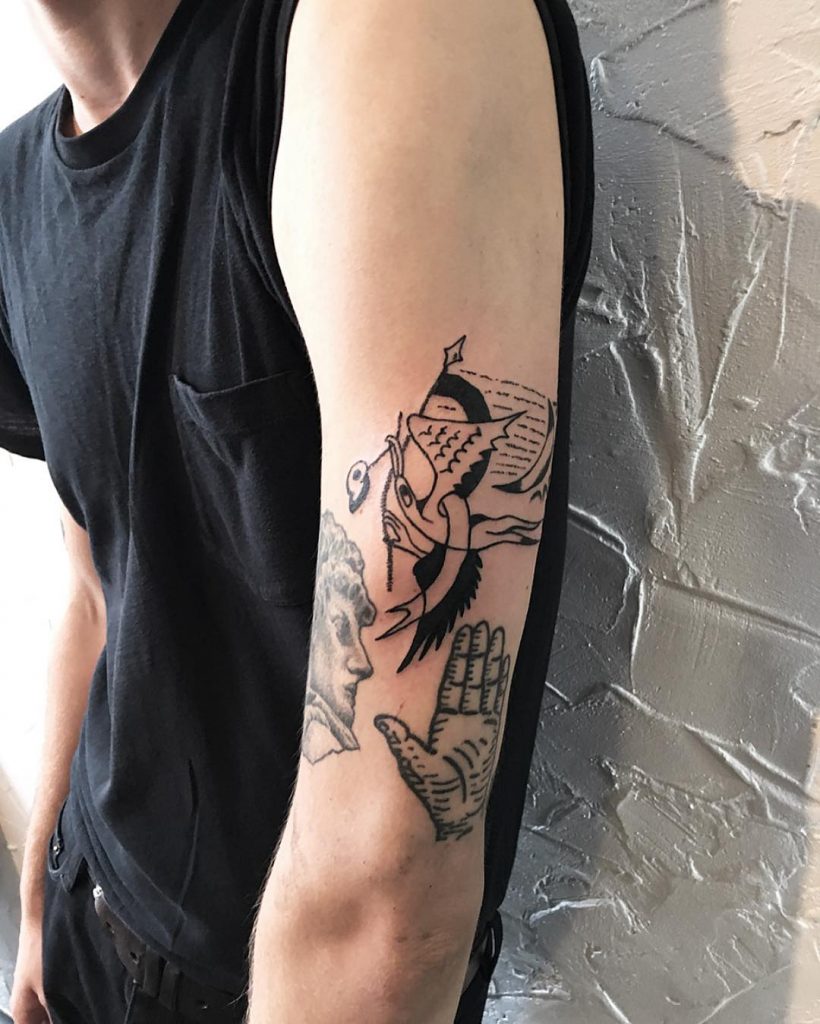
I have seen nothing quite like your backpieces, or the more ambitious work you produce. What are you trying to achieve when trusted with large-scale real estate? I’m just trying to make good compositions that get me and my customers excited. I like bare skin as much as tattooed skin. Mostly with the larger work, I’m looking for the tattoo to sit at a point where it’s just about holding itself together, but close to falling apart. I’m not sure if I’d call that a balanced point or not, but when it settles into its stillness, I still want a fight there. The main thing I want is some sort of fight or energy in the piece after it settles. I run my machines fast and like to play catch-up. I love texture and mark making, and how it makes the healed piece a lot more dynamic and longer lasting, as it moves and changes with the body over time.
I believe 100% in the power and potency of tattooing. Inherently, it’s an underground and subversive structure. Tattoos aren’t meant to be liked or appreciated by 100,000 people, and especially not jumped on by any majority. They are a subversive ritual. For me, tattoos are supposed to exist in a state of polarization. The scales are constantly changing, and this is where the energy and the magic lies, so I like the bigger work to be quite jarring visually. Of course, someone has to want to get it on their body. I can paint anything, but tattooing is an exchange, and I’m very lucky that I have people that understand what I’m trying to do and mostly give me free-reign. It’s always a concession between a client and myself, and what the skin wants and machine wants and what I want. Also, it should work next to other tattoos, so I need to take a lot of things into account.
I mostly draw right onto the skin these days. The currency of tattooing is time, so you should think like that in terms of placement. It’s a collaboration with decisions that were made 10 years ago and will be made in 10 years time, but the time thing is great – to sit and experience the exact sensation as those before you, and to be able to look someone in the eye with the same understanding that has permeated history for centuries, is mad. I play with traditional reference a lot. It’s all mostly from religious paintings, porno mags and advertisements. I like to play with combinations of traditional reference and my own drawings. I like to nod towards traditional, but mess around with it. I’m talking like I’m at a point where I’m in some sort of “creative bliss”, but it’s not like that at all; I kind of agonize over a lot of what I do, and stress out a lot. I draw designs over and over and over again to get the right level of rough, but held together, and on the skin it changes again! It’s important for us not to look backwards but forwards. A lot of the classics looked great on sailors because it was of its time, but seeing people trying to look like sailors and criminals now is just sort of a shitty and kitsch dress-up, and a quietening echo of something that was powerful in the past.
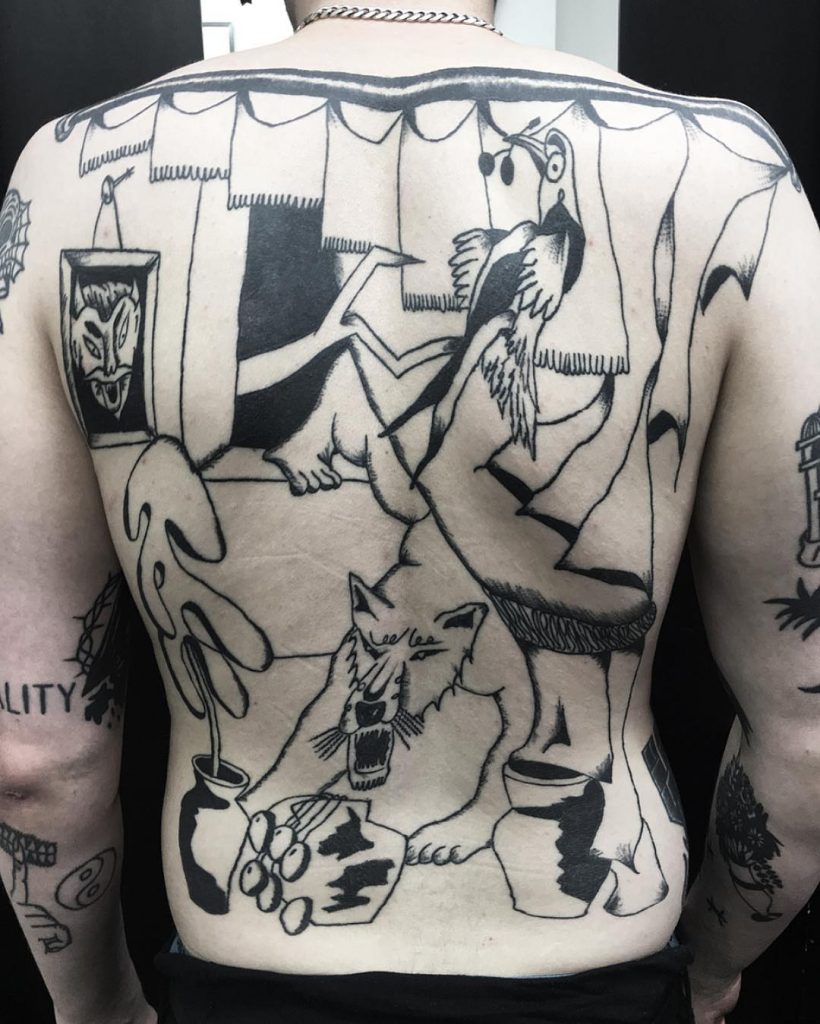
Where did you draw inspiration from when starting out in tattooing, and where are you currently sourcing influence? My first experiences with machines were to see what they could add to what I was already doing, like I mentioned before. What I was doing wasn’t on the skin at all! Right now, I guess I’m mostly excited by the same things as everyone else: painting, videos, art-theory, browsing eBay for all kinds of things, and a lot of outsider art as well as traditional reference. I love Welsh history, and draw from this a lot, but mostly I just like to draw and see what happens. I feel like every day someone is coming up in the world and doing exciting new work, and I love that! I don’t know what to say about tattooing in terms of whether or not I think it’s art – I’m not sure if it really even needs to enter that dialogue. It’s too available and too cheap, comparatively speaking, to ever be considered or work as a high-art commodity, which is why it’s great! Tattooing has permeated culture completely, and it’s not like a painting or a sculpture where you need to carry it into a gallery. With tattoos, you can enter any establishment and move and exist freely within it – you can infiltrate any demographic or space. I like that people don’t have so much choice over how they interact with tattooed skin, and I draw a lot of inspiration from that. Tattoos are much harder to avoid than art.
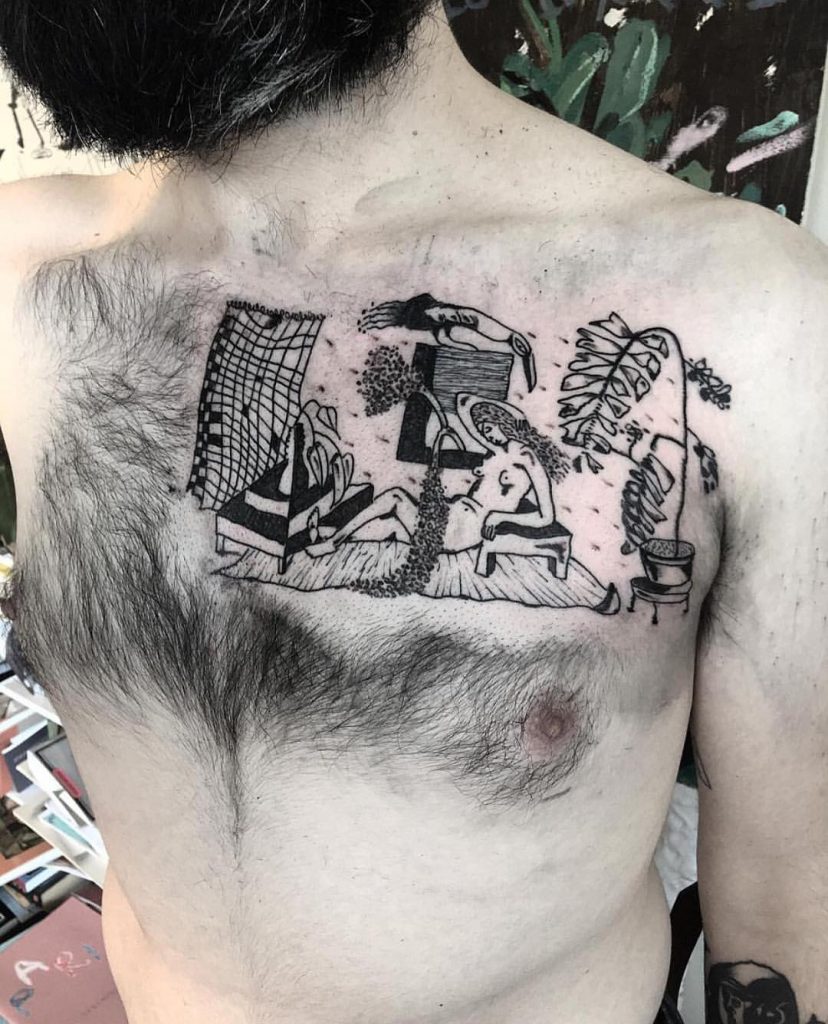
Prior to tattooing, you spent eight years as a student of fine art. What is it you felt you could achieve with tattoos that you couldn’t with any other medium? Everything changed for me over the course of a few days. I had both a group and solo show happening at the same time and I was right in the middle of moving apartments. Over one weekend, I had almost all my output and everything I owned stored at my parent’s place before moving it on. The river burst its banks by nearly nine feet that evening and destroyed everything I ever made – as well as everything I owned. At the same time, I was reading a book that was pushing the argument forward that there’s no way anyone could judge the merit of art in their own lifetime. Museums are almost always great because they have filtered down the best of the best over years and years and years, and exhibitions are often bad because there’s no filter. Tattoos don’t care or need any of it. I took some wry comfort in the idea that there was too much art now. Humanity has made enough. I had been thinking about tattooing, and getting tattooed, for a long time. It fell in place when I got into the temporality of it all. Give it 30 years, and no tattoos I make will be around anymore. That put this fire in me to commit to a new medium. Basically, I wanted to make temporary art that didn’t need a podium.
What’s your relationship to free-hand and free-machine tattooing, and how do these ways of working inform what you do? I guess I see mechanically copying a stencil and trying to reproduce something like a painting onto skin as ignoring the potential of the medium. I still sometimes use stencils because they’re incredibly useful, and I like to use everything I can to get the best results, but more and more often I’m moving away from them. Things change, though. Sometimes I like to get super loose, and other times tighten up. I’m not overly keen on trying to pin anything down and figure anything out 100%. I like to exploit the accidents and the unexpected things that can happen. I really like to see the marks of the needle and the hand of the person that’s done it. Also, it’s early days for me. I’ve not been tattooing for a huge amount of time – it’s been three years, and things change all the time. Since you live with a tattoo, and they exist in time, I think they should represent that. I really want the medium to be the message in a way, I guess. By drawing everything on, it works really well with the body every time – it makes it more of a process for me, and almost always unpredictable things happen that you need to respond to. I’m always wanting to feel excited by what I’m doing, so drawing tattoos straight on always keeps me at a point of being very fresh. It’s not a design I drew a few weeks ago or months with someone else in mind that I’m trying to make work elsewhere. It’s exactly where I’m at.
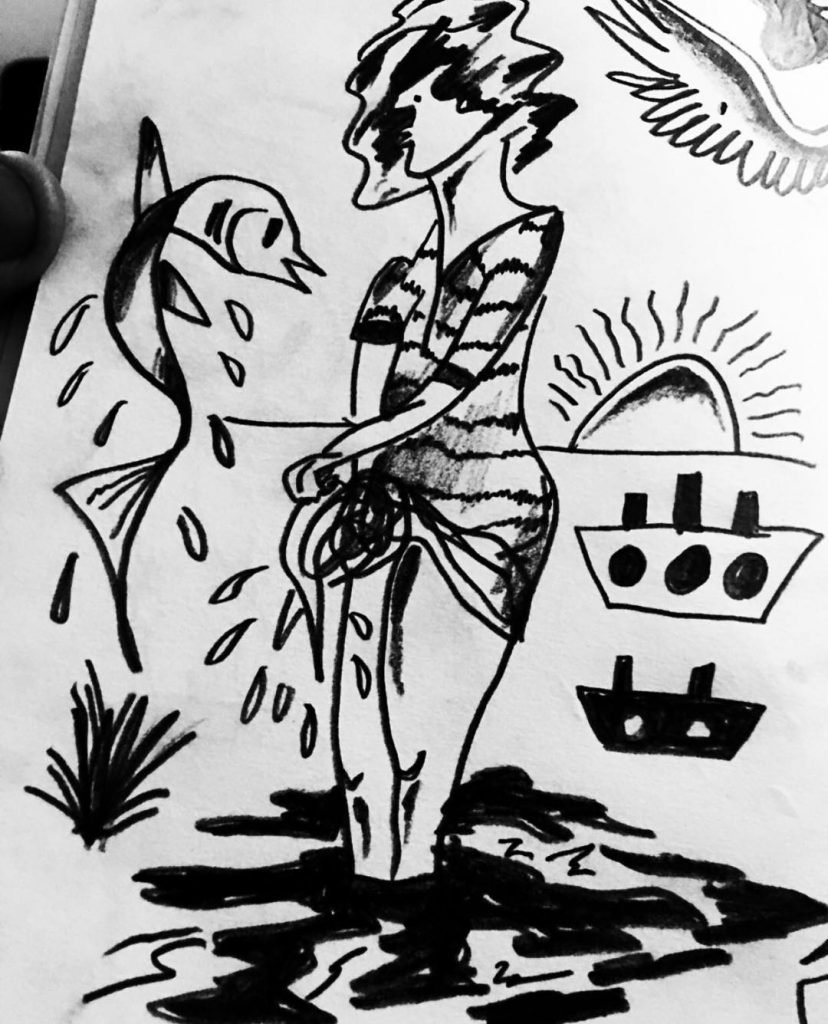
What’s next? Working on larger projects and travelling, always. I’m midway through a couple of backs and bodysuits, and I’m always on the look out to start large scale projects. I have a small journal centred around contemporary tattooing and visual cultures that I’m very excited about. Another issue is ready for release! I’m also working to develop some physical spaces where artists can stay and work during residencies; assisting with publishing projects and travel to help and hopefully widen the landscape a bit – involving communities and exchanges with fringe individuals and groups from other parts of the world.
I mean, a lot of the time I feel pretty confused from overthinking, or having a lot of projects mixing together at once, so my future plans are about finding a way to still be very productive when I’m still in the process of working things out. For the future, in terms of tattooing, of course I want big changes; I’d like to see tattooing move into a more positive and open realm, and the end of bullying and empire building – neo-liberal tattooers appropriating and diluting culture on the internet and TV, macho bullshit, lifestyle becoming consumption. Instead, seeing a rise in pure, potent, visually exciting and heartfelt work. Things are happening that I feel need to be talked about in a productive and positive way. It’s easy to be negative about the state of tattooing, but everyone choses where they want to be within it.
